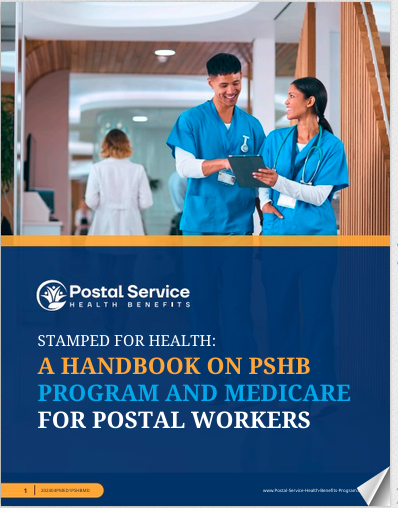Key Takeaways
-
Enrolling in the Postal Service Health Benefits (PSHB) program is crucial for maintaining health coverage tailored to postal workers and retirees in 2025.
-
Understanding deadlines, costs, and coverage options ensures you’re fully prepared for this new chapter in USPS health benefits.
Why PSHB Enrollment Matters More Than Ever
The transition to the Postal Service Health Benefits (PSHB) program in 2025 marks a significant shift for USPS employees and retirees. If you’re part of this community, staying informed and proactive is critical. This change doesn’t just impact your health coverage—it affects your overall financial planning, access to care, and peace of mind. Let’s dive into what you need to know to make the enrollment process seamless.
A New Era of Health Benefits
The PSHB program replaces the Federal Employees Health Benefits (FEHB) system for most postal workers and annuitants. Unlike the previous setup, PSHB is specifically tailored to meet the needs of USPS employees, retirees, and their families. By now, you’ve likely received notifications about this transition, but understanding the nuances of enrollment can help you avoid potential pitfalls.
Deadlines You Can’t Afford to Miss
Enrollment isn’t automatic for everyone. Here are the key timelines:
-
Mandatory Enrollment: If you are a USPS retiree or employee, you must enroll in a PSHB plan to maintain your coverage unless you’re already covered under another qualifying plan.
-
Open Season: Enrollment and plan changes occur annually during Open Season, which runs from mid-November to mid-December. Changes made during this period take effect on January 1 of the following year.
-
Special Enrollment Periods: Life events like marriage, birth, or retirement may qualify you for a Special Enrollment Period (SEP).
Missing these windows can result in a lapse in coverage or higher out-of-pocket costs. Mark your calendar and act early to secure your benefits.
Medicare Integration for Retirees
If you’re retired and eligible for Medicare, this is your year to pay close attention. PSHB coverage integrates with Medicare to offer enhanced benefits. Here’s what you should know:
Medicare Part B Enrollment Requirements
Most Medicare-eligible retirees must enroll in Medicare Part B to maintain PSHB coverage. Exceptions apply, such as if you retired before January 1, 2025. Part B provides medical coverage, complementing the hospital benefits under Medicare Part A and your PSHB plan’s additional services.
Cost Savings with Medicare
PSHB plans often reduce your out-of-pocket costs when paired with Medicare. This includes lower deductibles and coinsurance, along with prescription drug coverage under Medicare Part D. Make sure to coordinate your enrollment to maximize these savings.
How PSHB Coverage Works
PSHB plans are designed to offer comprehensive health benefits. Whether you’re actively employed or retired, understanding how these plans work can help you make informed decisions.
In-Network vs. Out-of-Network Costs
Choosing providers within your plan’s network keeps your costs lower. Most PSHB plans include:
-
Primary Care Visits: Affordable copayments for in-network doctors.
-
Specialist Visits: A slightly higher copayment but still manageable.
-
Emergency Care: Copayments or coinsurance for urgent medical needs.
Prescription Drug Coverage
PSHB plans include a $2,000 out-of-pocket cap for prescription drugs, a new feature in 2025. This cap provides financial relief for those with high medication costs. Additionally, retirees with Medicare Part D can benefit from reduced costs through integrated plans.
Costs to Consider
While PSHB plans are designed to be affordable, it’s essential to understand your financial responsibilities. These include:
-
Premiums: Deducted biweekly or monthly, depending on your employment status.
-
Deductibles: Ranging from $350 to $1,500 for in-network services, depending on your plan.
-
Copayments and Coinsurance: Out-of-pocket expenses for doctor visits, hospital stays, and prescriptions.
Review your plan’s details to understand what you’ll pay for various services. These costs are a key factor in choosing the right coverage.
Choosing the Right Plan for You
Selecting a PSHB plan isn’t one-size-fits-all. Your health needs, family situation, and financial goals should guide your decision. Here’s how to approach it:
Compare Plan Options
Each PSHB plan offers unique features. Compare the following:
-
Coverage: Ensure the plan covers your preferred doctors, hospitals, and medications.
-
Cost: Evaluate premiums, deductibles, and out-of-pocket maximums.
-
Additional Benefits: Look for value-added services like wellness programs or telehealth access.
Plan Levels
PSHB plans typically fall into categories such as low-deductible, high-deductible, and family plans. Assess your healthcare usage to determine which level meets your needs without overspending.
Steps to Enroll Successfully
Getting started with PSHB enrollment is straightforward when you follow these steps:
-
Review Your Options Early: Plan brochures and comparison tools are available online to help you make an informed decision.
-
Gather Necessary Information: Have your employee or annuitant ID, Social Security number, and Medicare information (if applicable) on hand.
-
Enroll During Open Season: Use the official enrollment portal or contact your human resources department for guidance.
-
Keep Records: Save confirmation emails or documentation of your enrollment for future reference.
Staying Informed Beyond Enrollment
Enrollment is just the beginning. Staying informed about your plan’s updates and changes ensures you get the most out of your benefits. Here’s how:
-
Annual Notices: Read the Annual Notice of Change (ANOC) from your plan to stay updated on premium changes, coverage adjustments, and added benefits.
-
Regular Check-Ins: Review your healthcare usage periodically to ensure your plan meets your needs.
-
Ask Questions: Don’t hesitate to contact customer service if you have questions about coverage or costs.
Don’t Leave Your Coverage to Chance
Enrolling in the PSHB program is the most important step you’ll take to secure your health benefits in 2025. By staying proactive and informed, you can avoid costly mistakes and enjoy the peace of mind that comes with knowing you and your family are covered.
Secure Your Health Benefits Today
PSHB enrollment isn’t just a routine task—it’s your key to comprehensive and affordable healthcare. Take control of your benefits by acting early, reviewing your options, and choosing the plan that’s right for you. With PSHB, you’re not just maintaining coverage—you’re investing in your future well-being.





